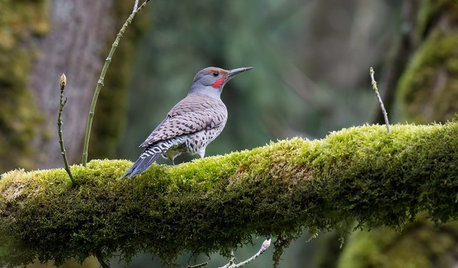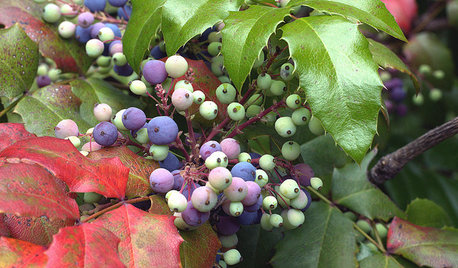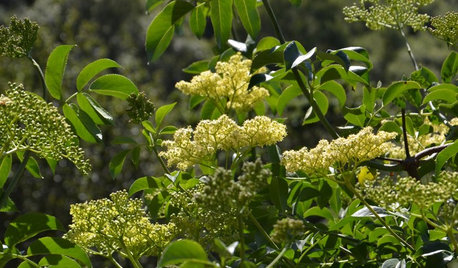any berries left for migrant birds?
laylaa
14 years ago
Related Stories

GARDENING FOR BIRDSFeed the Birds: 6 Plants for Abundant Winter Berries
Be kind to your fair feathered friends during lean food times by planting a shrub or tree loaded with nutritious snacks
Full Story
GARDENING GUIDES8 Native Shrubs for Year-Round Bird Feeding
It’s not just about berries. These plants provide insects for birds and seasonal interest for gardeners
Full Story
GARDENING GUIDESBackyard Birds: Healthy Home Habitats for Northern Flickers
These colorful woodpeckers found across the U.S. and Canada love berries, seeds and ants and often nest in deep burrows in trees
Full Story
GARDENING FOR BIRDSWild Birds Transform a Woman’s Garden and Life
How Sharon Sorenson created a wildlife haven and became the Bird Lady of Southern Indiana
Full Story
GARDENING GUIDESGreat Design Plant: Mahonia Aquifolium for Birds
Oregon grape puts on a bold spectacle from spring through winter and is ideal to brighten partly shady corners in the U.S. West
Full Story
GARDENING GUIDESGreat Design Plant: Sambucus Nigra Caerulea for the Birds
Blue elderberry is a favorite of birds and other wildlife in its native California
Full Story
GARDENING GUIDESPlant Black Cherry Trees for the Birds and Bees
Plant Prunus serotina in the Central and Eastern U.S. for spring flowers, interesting bark and beautiful fall color
Full Story
GARDENING GUIDESBackyard Birds: Invite Entertaining Hummingbirds Into Your Garden
Hummingbirds — unique to the Americas — zip through open landscapes seasonally or year-round. Here’s how to attract them
Full Story
GARDENING FOR BUTTERFLIESBring on the Birds: Natural Habitat Ideas for Gardens of All Sizes
Provide nesting, watering and perching spots inspired by the Costa Rican jungle and watch the birds flock on over
Full Story
GARDENING GUIDES13 North American Backyard Birds to Know
Find out about these enchanting native species and learn how to attract them to your yard
Full StoryMore Discussions






maifleur01
christie_sw_mo
Related Professionals
West Milford Landscape Architects & Landscape Designers · Sand Springs Landscape Architects & Landscape Designers · South Orange Landscape Architects & Landscape Designers · Arden-Arcade Landscape Contractors · Canby Landscape Contractors · Columbine Landscape Contractors · Elkridge Landscape Contractors · Euclid Landscape Contractors · Kearny Landscape Contractors · Lakewood Landscape Contractors · Leicester Landscape Contractors · Lewisville Landscape Contractors · Rosemount Landscape Contractors · Saint George Landscape Contractors · Cincinnati Driveway Installation & Maintenancemaifleur01
laylaaOriginal Author
christie_sw_mo
dragonfly_wings
laylaaOriginal Author
maifleur01
christie_sw_mo
Iris GW
laylaaOriginal Author